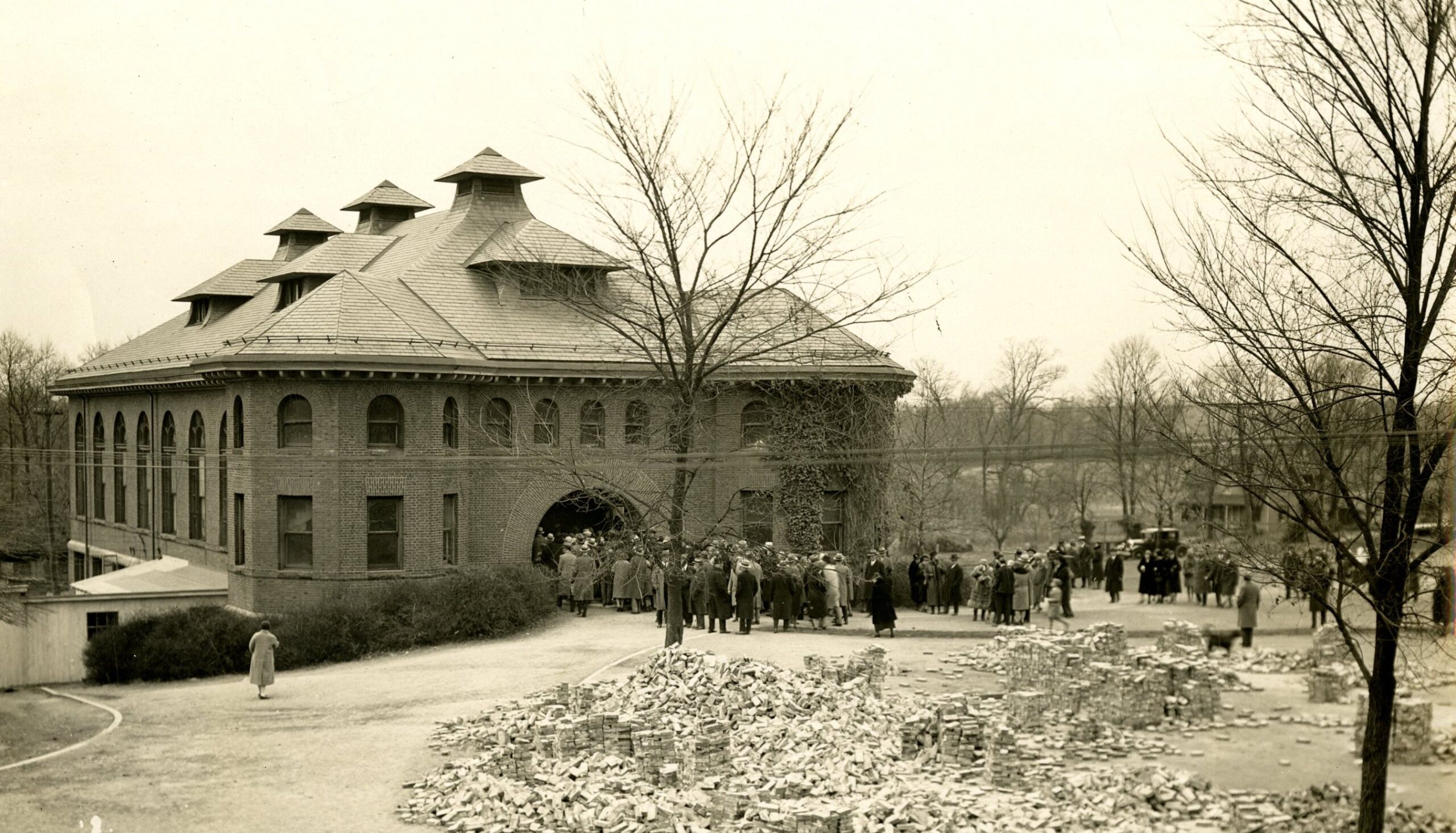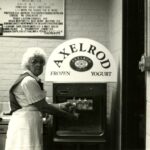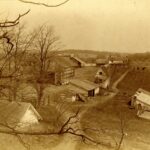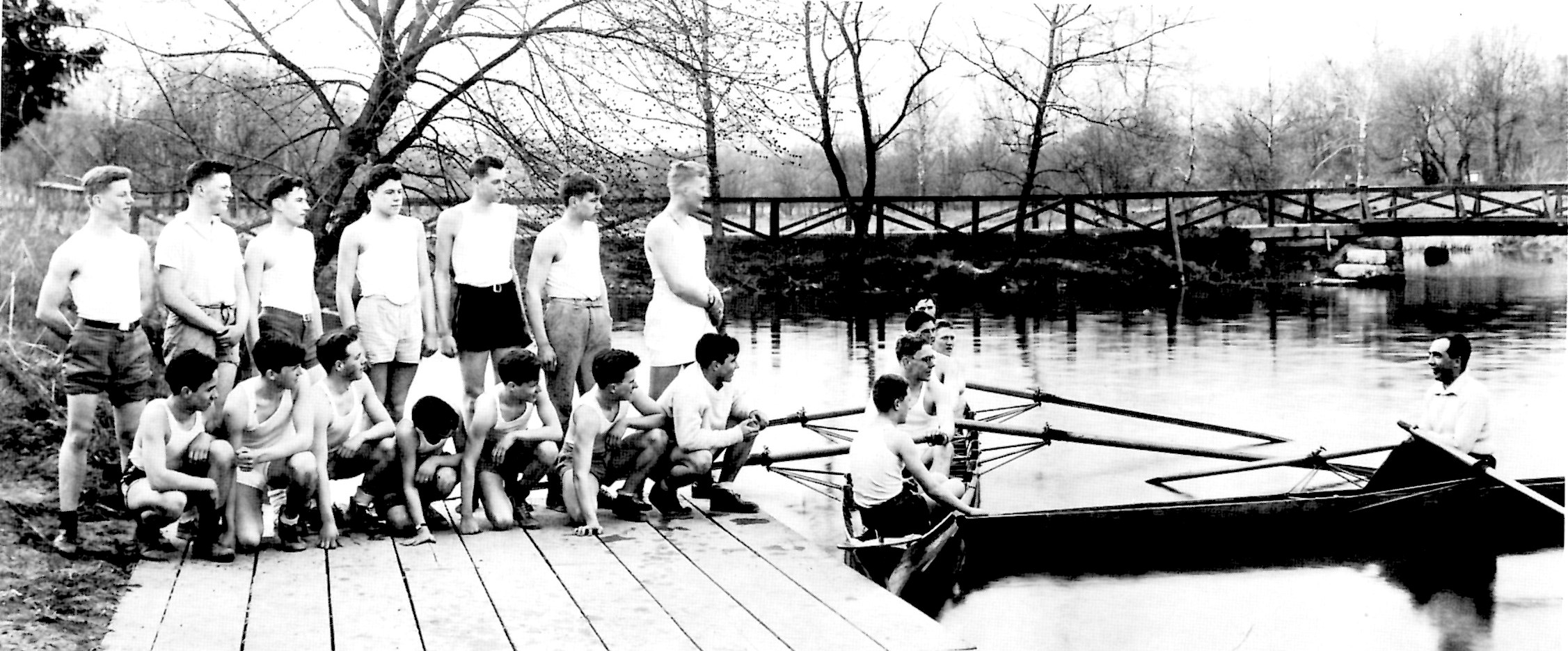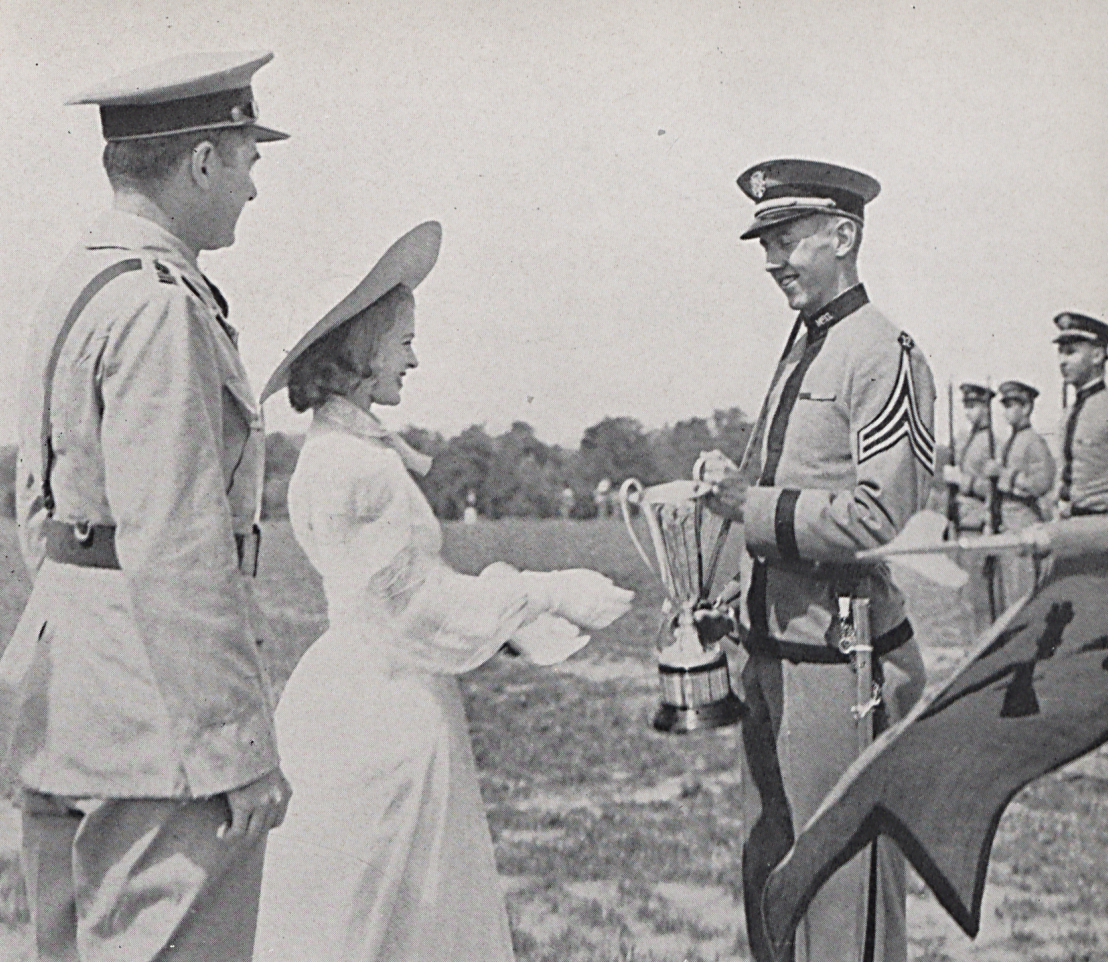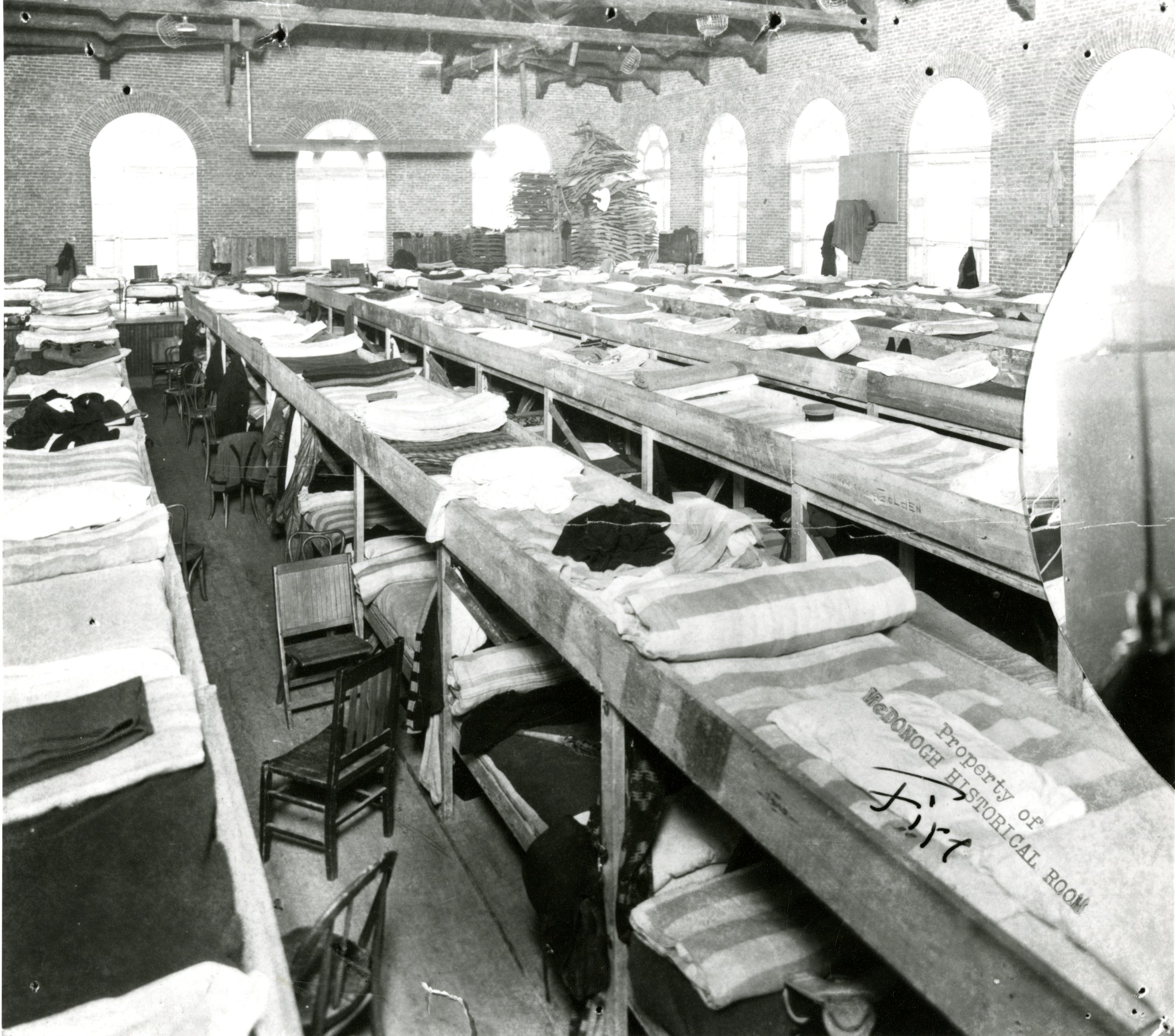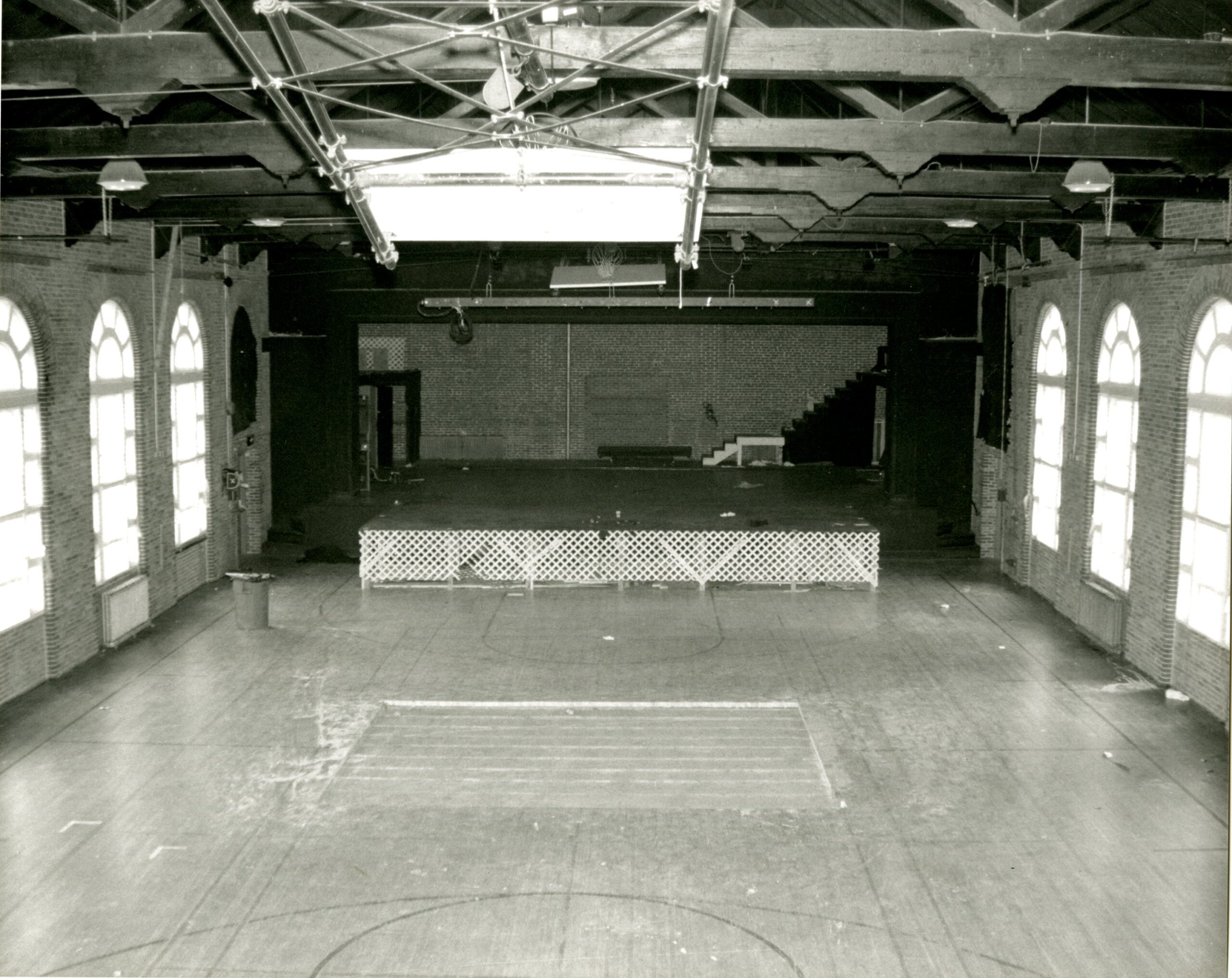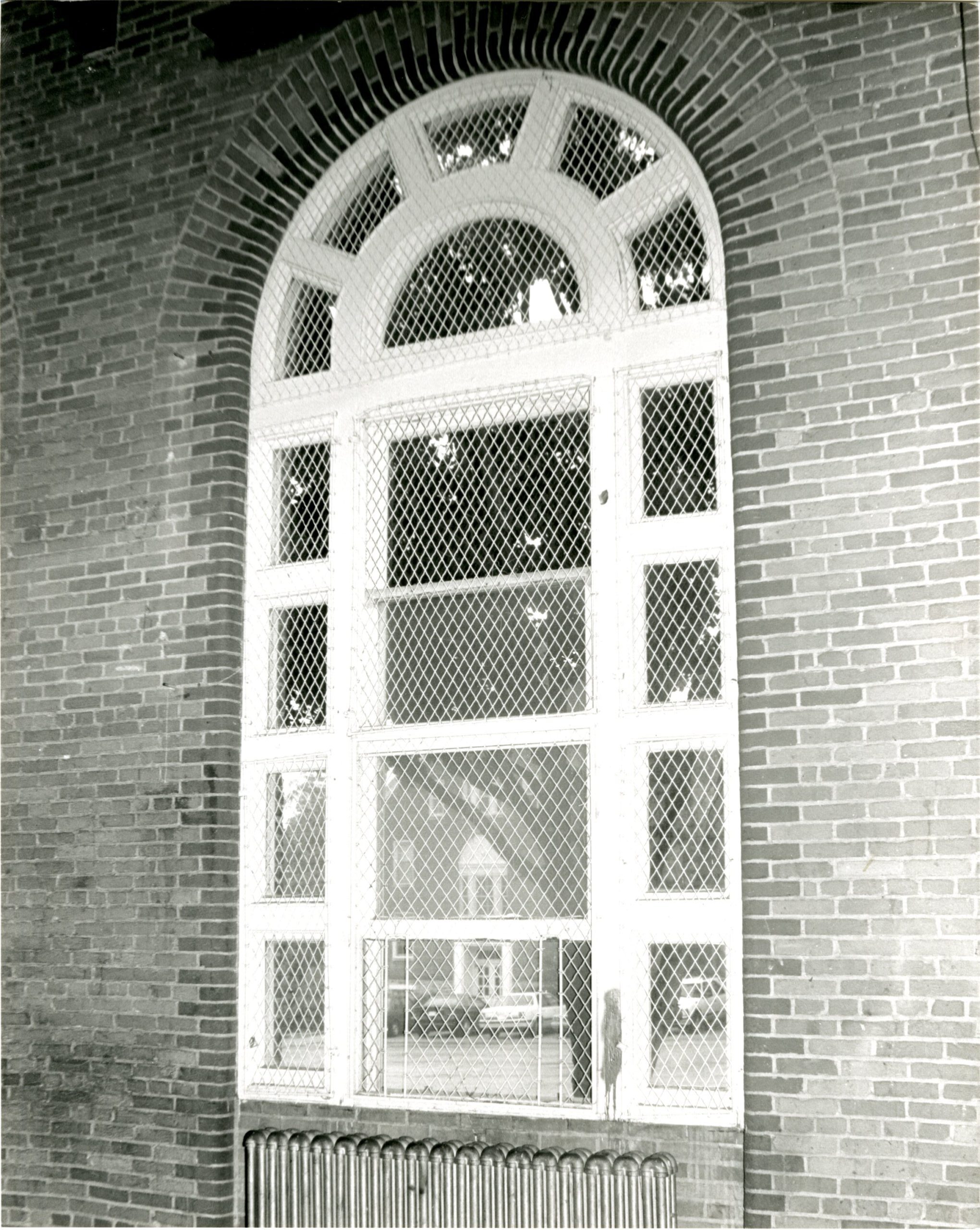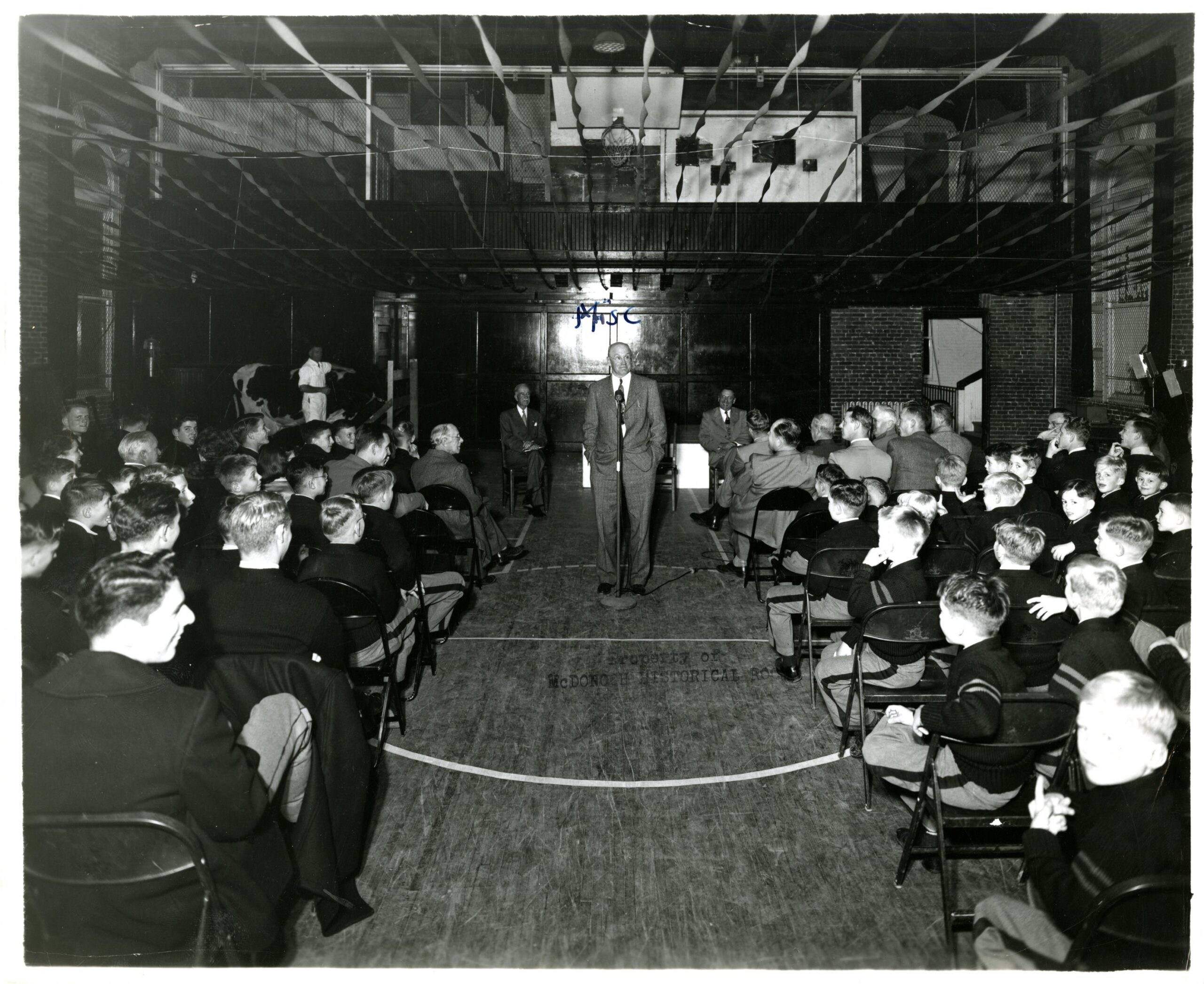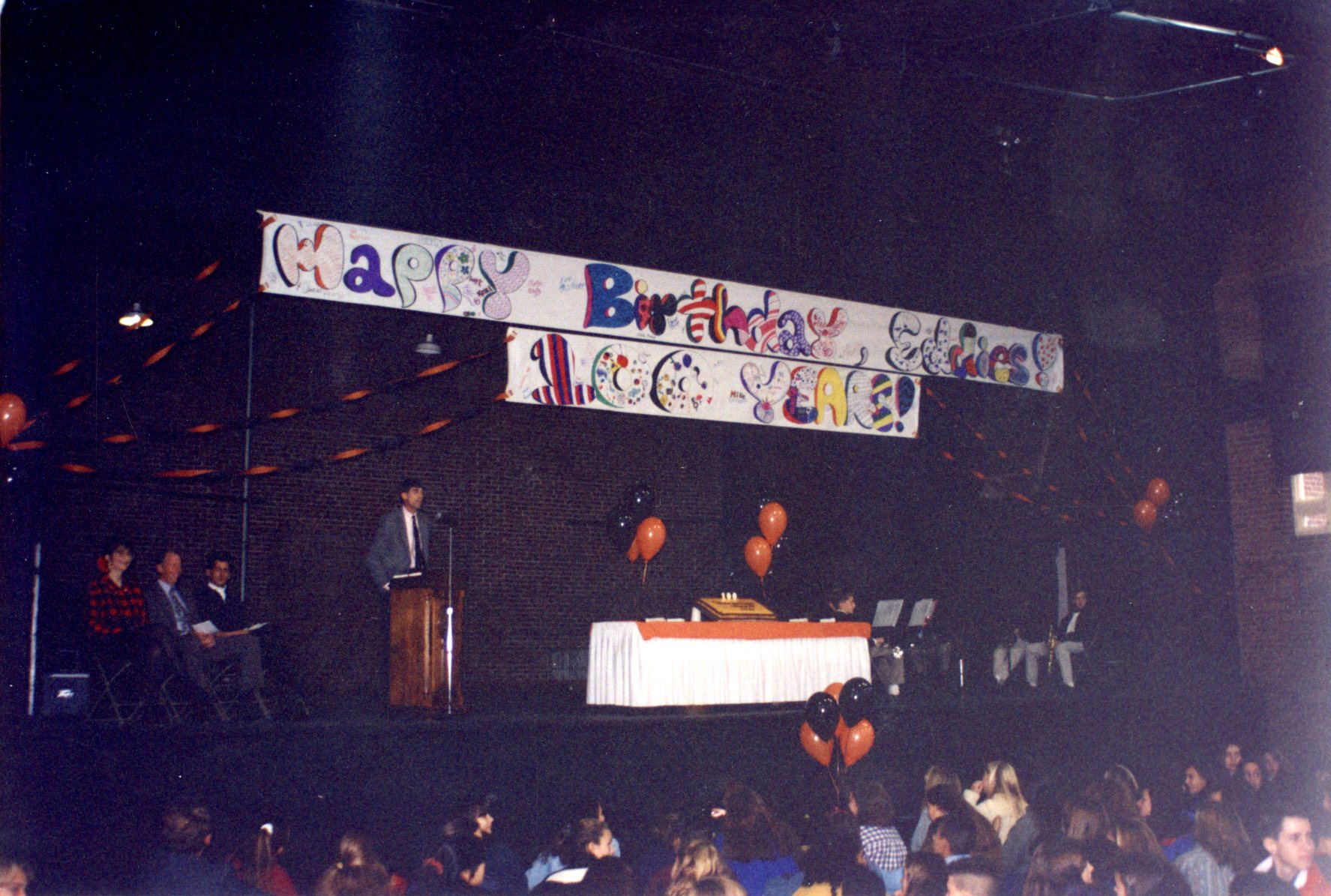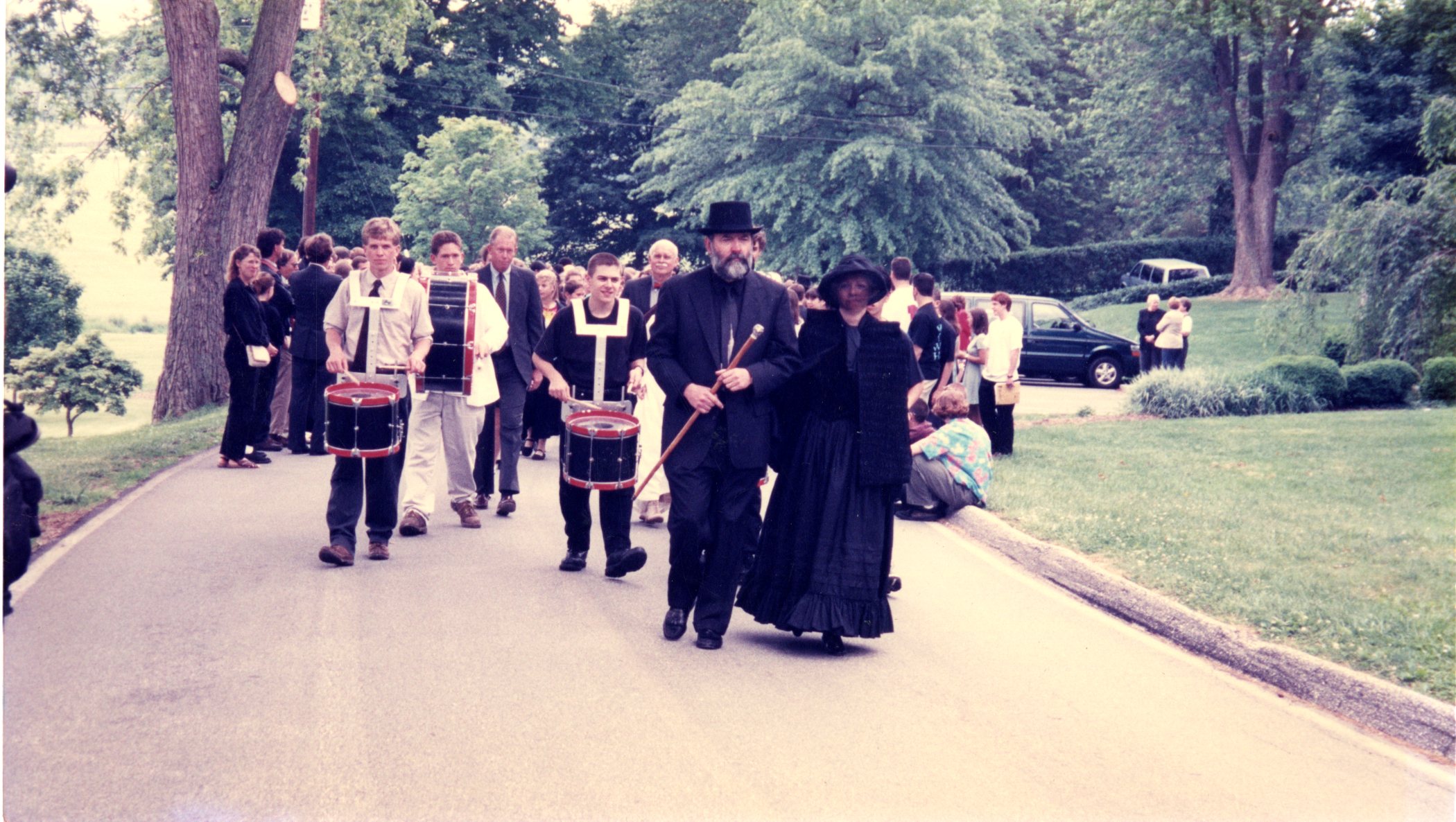Imagine a school gymnasium so iconic that it’s lovingly referred to by a nickname, celebrated when it reaches a milestone birthday, and mourned at the end of its life. That’s Edwards Gymnasium, built in 1893 and named in 1962 in honor of James T. Edwards, the School’s principal at the time of construction.
The gym, designed by Alphonso Bieler, a member of the Class of 1878, cost $25,000 to build and used stone from a quarry at McDonogh. The free-standing, one-story building with a basement had octagonal stair towers at the corners of the front, arched windows on three sides, and an arched brick front entrance (still visible through the Allan Building corridor). The roof was open-timbered, and the interior surface of the walls was finished in red brick. An article in The Week during its construction noted, “The gymnasium will be oiled and varnished and furnished with apparatus for developing the various muscles of the body.” When McDonogh School’s gymnasium opened in 1893, the Baltimore Herald gushed, “It is one of the most complete athletic rendezvous possessed by any educational institution in the country.”
The multipurpose space served the community for more than 100 years and was used for athletics, dances, bazaars, theatre productions (a stage was added later), assemblies, dinners, concerts, festivals, military drills, and even as a dorm with double-decker bunks after the main building fire in 1928. The gymnasium was so beloved that there was a schoolwide celebration on its 100th birthday in 1993 and a New Orleans-style funeral four years later prior to the demolition to make way for the Burck Center (Transforming Eddies into a theater/gathering space was cost-prohibitive.).
In his 1997 eulogy for the gymnasium, Director of Religious Studies, Character, and Service John Grega said, “Edwards Gymnasium, The Gym, The Old Gym, Eddie’s, has been a friend on the McDonogh campus for generations. During that time, whenever there was a particular need, Eddie’s was there, ready to help: a welcoming presence, a home, McDonogh’s very first multipurpose center.”
He continued, “Rarely locked, always inviting, Eddie’s served myriad purposes: for Bazaar games and Gong Shows, for rainy day drills and lunch formations, for the solitary juggler practicing his craft and the Upper School librarian practicing hers, for glue guns burning fingers as they desperately transformed cardboard into watertight crafts of beauty, for games of moonlight basketball alone and with others, for Renaissance banquets with lords and ladies and sprightly dancers and courtly choruses, for the contortions and confabulations of Improv, Eddie’s was there.”
“Oh, like many a friend Eddie’s has had its warts—from too-easy access to swooping starlings and sparrows to imminent danger for any hard-charging fast-breaker nearing the end of her drive, from acoustics that absorbed the voice of more than one nervous orator to backstage changing areas that challenged dexterity, ingenuity, and modesty. But, for all the warts, Eddie’s
was there.”
He concluded, “And so we gather today to bid farewell, to say goodbye to an old friend, steady and dependable, a friend in good times and difficult ones, a friend who saw us at our best and helped us be our best. Goodbye, Edwards Gymnasium, Old Gym, Eddie’s, and thanks!”
